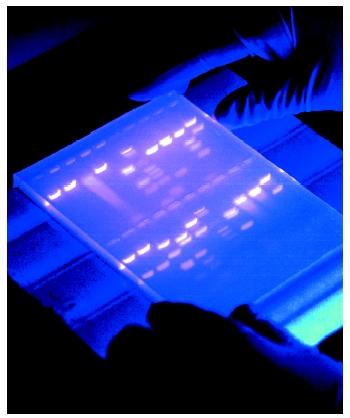 One of my pet peeves is our willingness to accept information offered up as solid fact without giving it a good smell test, without subjecting it to a healthy dose of skepticism, double checking, and independent verification.
One of my pet peeves is our willingness to accept information offered up as solid fact without giving it a good smell test, without subjecting it to a healthy dose of skepticism, double checking, and independent verification.
Everyone who watches CSI “knows” that DNA is infallible. Truth be told, even with DNA there are a lot more problems with bad lab work than prosecutors would like to admit. Furthermore, many of the conclusions drawn from so-called non-DNA forensic “evidence” (fibers, bite marks, paint samples, footprint casts, hair samples) is not based upon any independent double-blind, empirical scientific studies. The good news is that of late, courts have been demanding a lot more solid, reliable, scientific proof of the validity of said conclusions and interpretations before they will allow it to come before the jury.
Still, DNA evidence has remained the gold standard. At least until recently. An August 18, 2009 article in The New York Times drew attention to a study by Israeli scientists who successfully fabricated DNA evidence. You got it, the ultimate frame.
While beyond the means of your average criminal, “Any biology undergraduate could perform this,” said Dan Frumkin, the lead author of the paper, published online July 17, 2009 by the journal, Forensic Science International: Genetics (abstract below). “You can just engineer a crime scene.”
One more good reason to be from Missouri, the “Show Me” state!
Abstract from FORENSIC SCIENCE INTERNATIONAL: GENETICS
Over the past twenty years, DNA analysis has revolutionized forensic science, and has become a dominant tool in law enforcement. Today, DNA evidence is key to the conviction or exoneration of suspects of various types of crime, from theft to rape and murder. However, the disturbing possibility that DNA evidence can be faked has been overlooked. It turns out that standard molecular biology techniques such as PCR, molecular cloning, and recently developed whole genome amplification (WGA), enable anyone with basic equipment and know-how to produce practically unlimited amounts of in vitro synthesized (artificial) DNA with any desired genetic profile. This artificial DNA can then be applied to surfaces of objects or incorporated into genuine human tissues and planted in crime scenes. Here we show that the current forensic procedure fails to distinguish between such samples of blood, saliva, and touched surfaces with artificial DNA, and corresponding samples with in vivo generated (natural) DNA. Furthermore, genotyping of both artificial and natural samples with Profiler Plus® yielded full profiles with no anomalies. In order to effectively deal with this problem, we developed an authentication assay, which distinguishes between natural and artificial DNA based on methylation analysis of a set of genomic loci: in natural DNA, some loci are methylated and others are unmethylated, while in artificial DNA all loci are unmethylated. The assay was tested on natural and artificial samples of blood, saliva, and touched surfaces, with complete success. Adopting an authentication assay for casework samples as part of the forensic procedure is necessary for maintaining the high credibility of DNA evidence in the judiciary system.


0 Comments